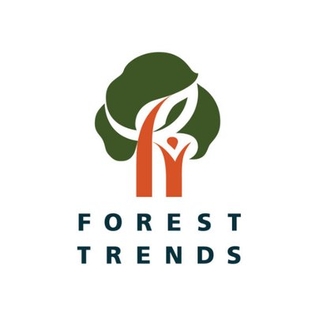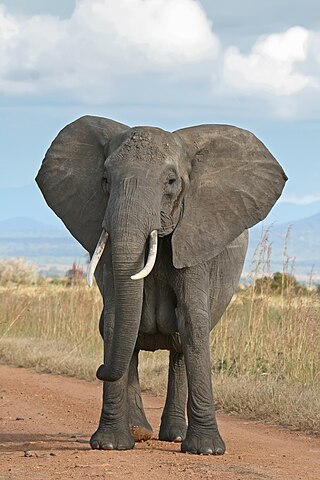
The International Union for Conservation of Nature (IUCN) is an international organization working in the field of nature conservation and sustainable use of natural resources. Founded in 1948, IUCN has become the global authority on the status of the natural world and the measures needed to safeguard it. It is involved in data gathering and analysis, research, field projects, advocacy, and education. IUCN's mission is to "influence, encourage and assist societies throughout the world to conserve nature and to ensure that any use of natural resources is equitable and ecologically sustainable".
The Palestinian NGOs Network (PNGON) is a non-profit, non-governmental organization with a mandate to protect the environment of Palestine by acting as a coordinating body for Palestinian environmental organizations located in the West Bank and Gaza Strip. PNGON was initiated after the 2000 al-Aqsa Intifada due to heightened demands for Palestinian environmental organizations to defend the Palestinian environment.

The World Association of Zoos and Aquariums (WAZA) is the "umbrella" organization for the world zoo and aquarium community. Its mission is to provide leadership and support for zoos, aquariums, and partner organizations of the world in animal care and welfare, conservation of biodiversity, environmental education and global sustainability.
The Macedonian Ecological Society (MES) was founded in 1972, in what was then known as the Socialist Republic of Macedonia.

Papua New Guinea together with the West Papua region of Indonesia make up a major tropical wilderness area that still contains 5% of the original and untouched tropical high-biodiversity terrestrial ecosystems. PNG in itself contains over 5% of the world's biodiversity in less than 1% of the world's total land area. The flora of New Guinea is unique because it has two sources of origin; the Gondwana flora from the south and flora with Asian origin from the west. As a result, New Guinea shares major family and genera with Australia and the East Asia, but is rich in local endemic species. The endemicity is a result of mountainous isolation, topographic and soil habitat heterogeneity, high forest disturbance rates and abundant aseasonal rainfall year round. PNG boasts some 15–21,000 higher plants, 3,000 species of orchids, 800 species of coral, 600 species of fish, 250 species of mammals and 760 species of birds and 8 species of tree-kangaroos out of which 84 genera of animals are endemic. Ecosystems range from lowland forests to montane forests, alpine flora down to coastal areas which contains some of the most extensive pristine mangrove areas in the world. Much of this biodiversity has remained intact for thousands of years because the ruggedness of the terrain made the interior lands inaccessible; furthermore low population density and restrictions on the effectiveness of traditional tools, ensured that these biodiversity was never overexploited.

The Memorandum of Understanding (MoU) concerning Conservation Measures for Marine Turtles of the Atlantic Coast of Africa is a 1998 multilateral environmental memorandum of understanding that entered into effect on 1 July 1999 under the auspices of the Convention on Migratory Species of Wild Animals (CMS), also known as the Bonn Convention. The MoU focuses on the protection of six marine turtle species that are estimated to have rapidly declined in numbers along the Atlantic Coast of Africa. The MoU covers 26 range States. As of May 2013, 23 range States have signed the MoU.
According to an important University's master program, Environmental governance (EG) consist of a system of laws, norms, rules, policies and practices that dictate how the board members of an environment related regulatory body should manage and oversee the affairs of any environment related regulatory body which is responsible for ensuring sustainability (sustainable development) and manage all human activities—political, social and economic. Environmental governance includes government, business and civil society, and emphasizes whole system management. To capture this diverse range of elements, environmental governance often employs alternative systems of governance, for example watershed-based management. Obviously, in fact the EG arrangements are very diversed and not at all as inclusive as we could wish them to be.
The Kruger to Canyons Biosphere Region is a biosphere reserve situated in the north eastern region of South Africa, straddling Limpopo and Mpumalanga Provinces. In 2001, under the supervision of the then Department of Environmental Affairs (DEA), the Kruger to Canyons Biosphere Region was officially ratified by UNESCO as part of the Man and the Biosphere (MaB) Programme. UNESCO's Man and the Biosphere Programme provides a framework for exploring local solutions to challenges by mainstreaming biodiversity conservation and sustainable development, integrating economic, social and environmental aspects and recognizing their vital linkages within specific learning landscapes adjacent to Protected Areas.
The Rainforest Foundation UK (RFUK) is a non-profit NGO working in Africa and South America. It is one of the first international organizations to support the indigenous peoples of the world's rainforests in their efforts to protect their environment and fulfill their rights to land, life and livelihood. The Foundation aims to protect rainforests by securing the land rights of indigenous peoples and other forest-dependent communities. It also campaigns internationally on issues such as industrial logging, climate change, agricultural expansion and nature conservation.

The World Database on Protected Areas (WDPA) is the largest assembly of data on the world's terrestrial and marine protected areas, containing more than 260,000 protected areas as of August 2020, with records covering 245 countries and territories throughout the world. The WDPA is a joint venture between the United Nations Environment Programme World Conservation Monitoring Centre and the International Union for Conservation of Nature World Commission on Protected Areas.

Forest Trends is a non-profit organization founded in 1998 and based in Washington, DC, that connects with economic tools and incentives for maintaining ecosystems. Its mission is four-fold: to expand the value of forests to society, to promote sustainable forest management and conservation by creating and capturing market values for ecosystem services, to support innovative projects and companies that are developing these markets and to enhance the livelihoods of local communities living in and around those forests.

The African Conservation Foundation (ACF) is an international non-governmental organisation established in 1999 and registered in 2001. Its focus is wildlife and habitat conservation within and outside of protected areas, adopting an integrated approach which includes community development and environmental education. The organisation is registered as a charity, supporting and conducting field conservation projects around Africa. It also maintains an Africa-wide network for information exchange and capacity building of conservation efforts in the region.
The Memorandum of Understanding (MoU) Concerning Conservation, Restoration and Sustainable Use of the Saiga Antelope is a Multilateral Environmental Memorandum of Understanding and came into effect on 24 September 2006 under the auspices of the Convention on Migratory Species of Wild Animals (CMS), also known as the Bonn Convention. The MoU covers five range States, all of which have signed. A number of cooperating organizations have also signed the MoU.

The Memorandum of Understanding (MoU) concerning Conservation Measures for the West African Populations of the African Elephant is a Multilateral Environmental Memorandum of Understanding and was launched under the auspices of the Convention on Migratory Species of Wild Animals (CMS), also known as the Bonn Convention, on 22 November 2005, in close cooperation with the African Elephant Specialist Group (AfESG) of the IUCN Species Survival Commission (IUCN/SSC). The MoU covers thirteen range States, all of which have signed the MoU.

The Memorandum of Understanding (MoU) Concerning the Conservation of the Manatee and Small Cetaceans of Western Africa and Macaronesia is a Multilateral Environmental Memorandum of Understanding and entered into effect on 3 October 2008 under the auspices of the Bonn Convention. The MoU covers 29 range States. As of August 2012, 17 range States have signed the MoU, as well as a number of cooperating organizations.

The Environmental Protection Agency, is an agency of Ministry of Environment, Science, Technology and Innovation, established by EPA Act 490 (1994). The agency is dedicated to improving, conserving and promoting the country’s environment and striving for environmentally sustainable development with sound, efficient resource management, taking into account social and equity issues. It oversees the implementation of the National Environment Policy. EPA Ghana's mission is to manage, protect and enhance the country’s environment and seek common solutions to global environmental problems. Its mission is to be achieved through an integrated environmental planning and management system with broad public participation, efficient implementation of appropriate programs and technical services, advice on environmental problems and effective, consistent enforcement of environmental law and regulations. EPA Ghana is a regulatory body and a catalyst for change to sound environmental stewardship.
The Landscape Conservation Cooperatives (LCC), established in 2009 in the United States, are a network of 22 regional conservation bodies covering the entire United States and adjacent areas. They are autonomous cooperatives sponsored by the U.S. Department of the Interior and aim to develop coordinated conservation strategies applicable to large areas of land. Partnerships are formed with government and non-government conservation organizations to achieve common goals of conservation. While fairly new as government supported entities, the LCCs are similar to initiatives that have been started or advocated in other countries.

The Pastoral and Environmental Network in the Horn of Africa (PENHA) is an international non-governmental organisation, founded in 1989 by professionals and development workers from the Horn of Africa to address pastoral and agro-pastoral development from a regional perspective and provide cross-learning at a global level. With headquarters in London, PENHA has established country offices in Ethiopia and Somaliland, with close organisational partnerships in Eritrea, Sudan and Uganda.
In this article, NGOs in West Africa will be divided into three categories: African national NGOs, African international NGOs, and non-African international NGOs. NGOs stand for non-governmental organizations. These organizations are mostly non-profit and mostly work independently from the government, they have specific aims that range from human rights, finance, health, education and more. There are many non-governmental organizations in West Africa, and much activity between these countries, organizations and the rest of the world.










